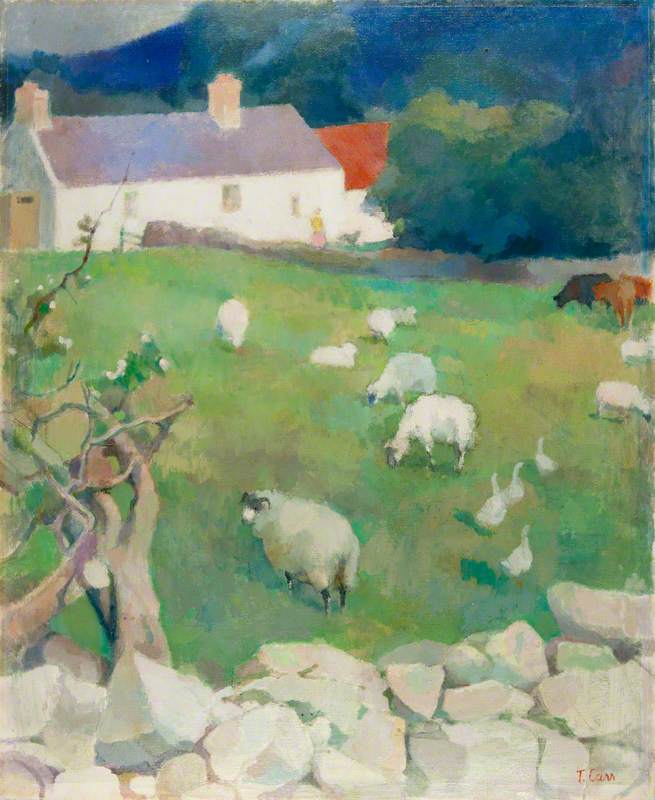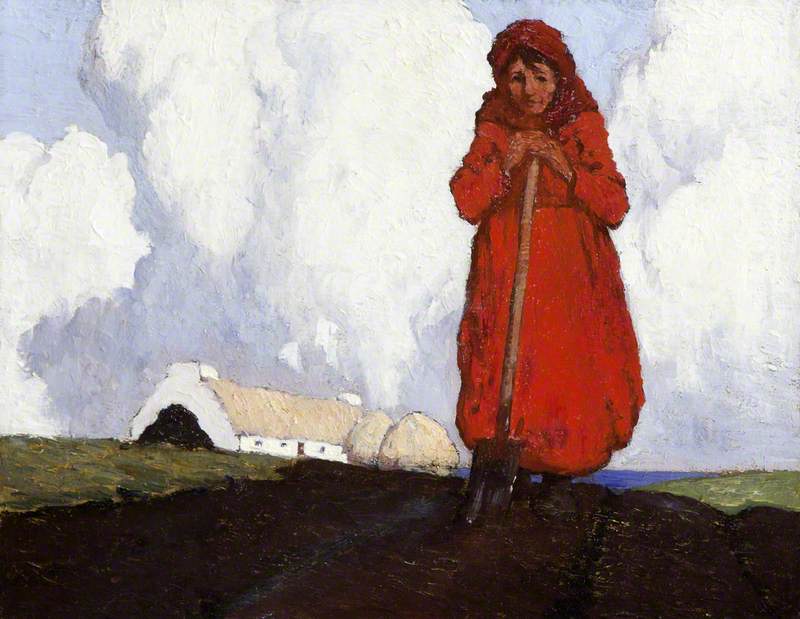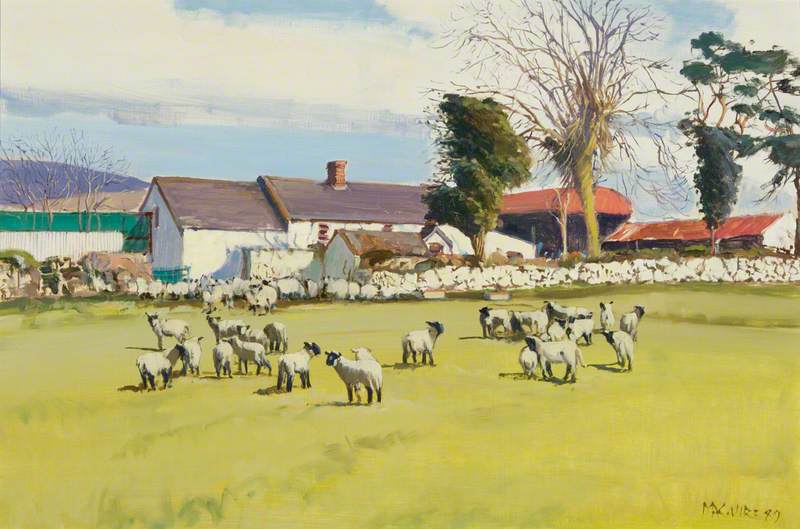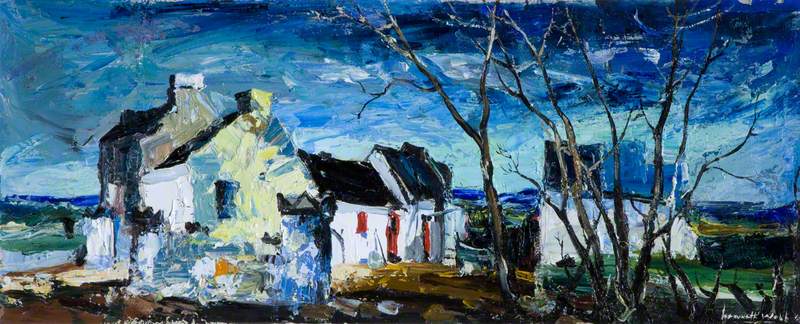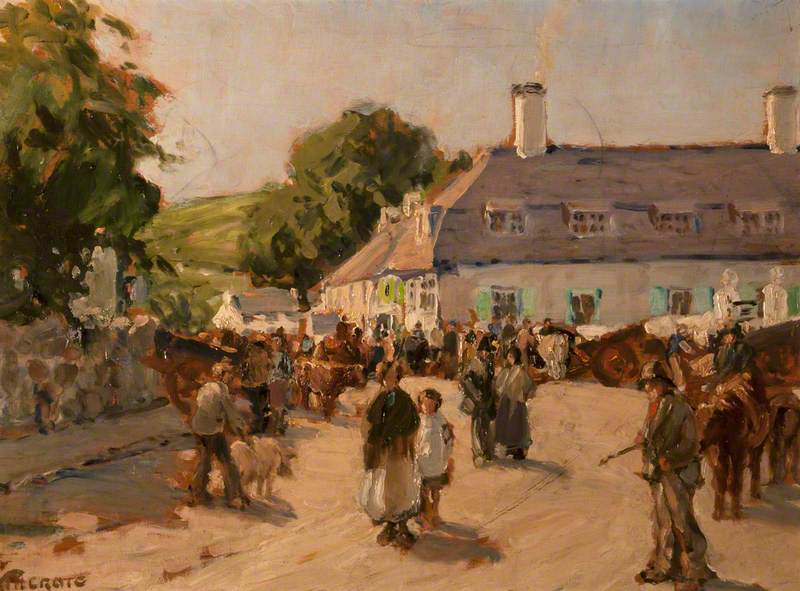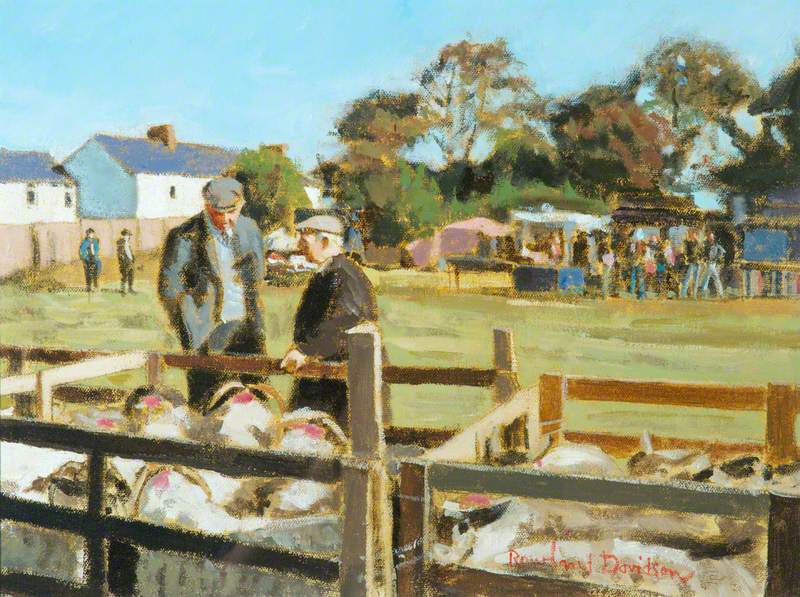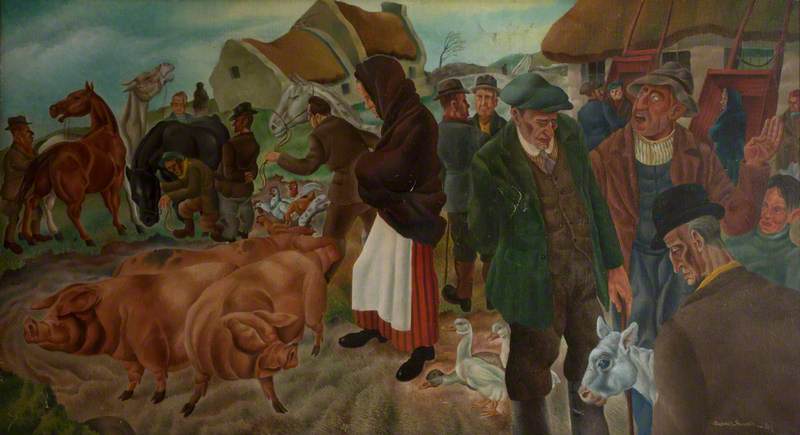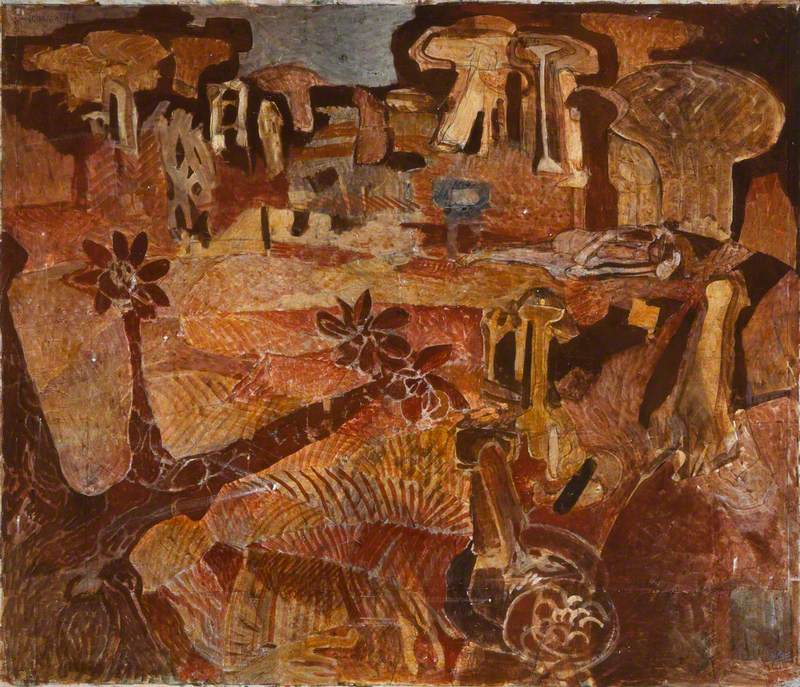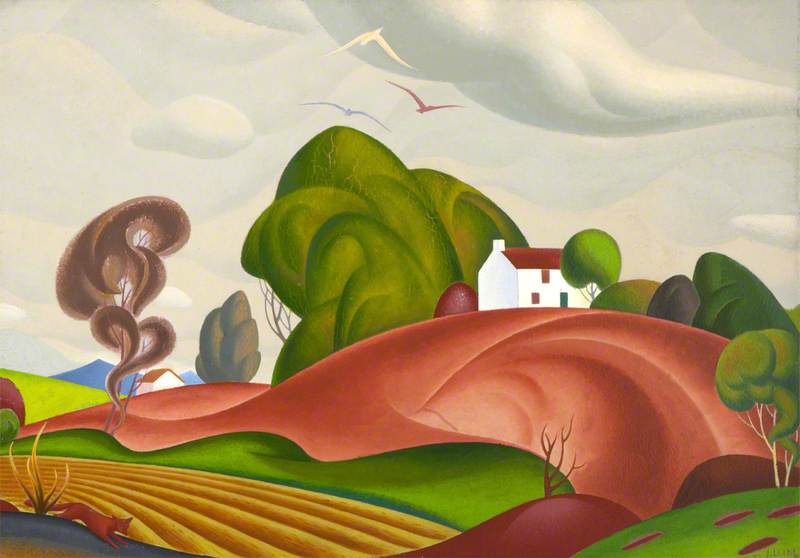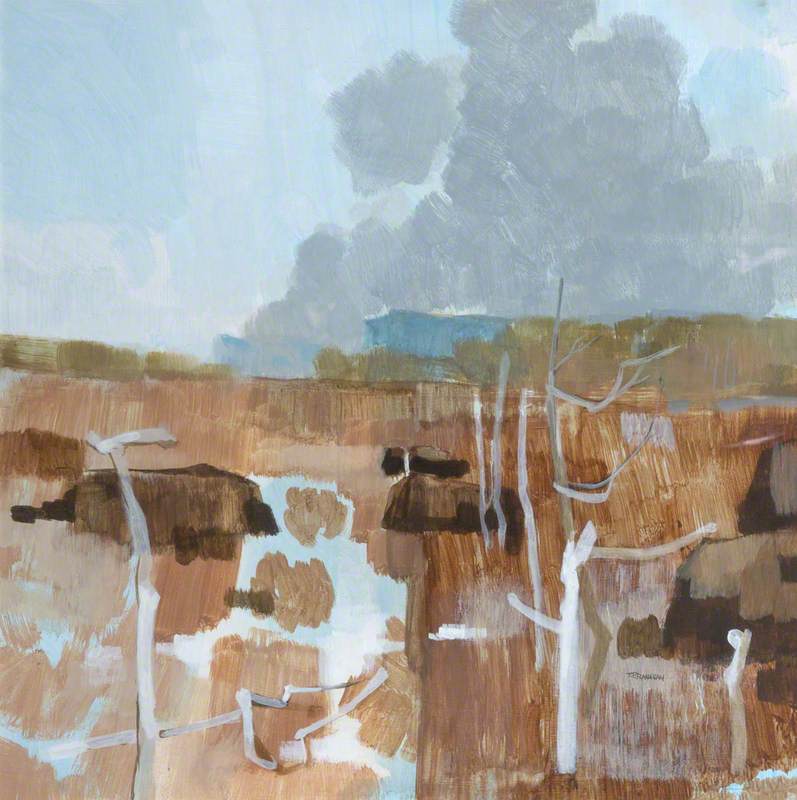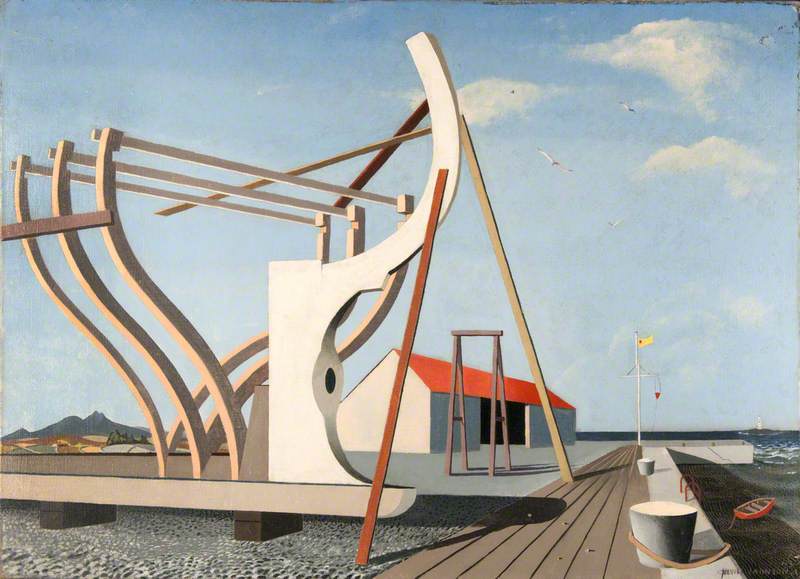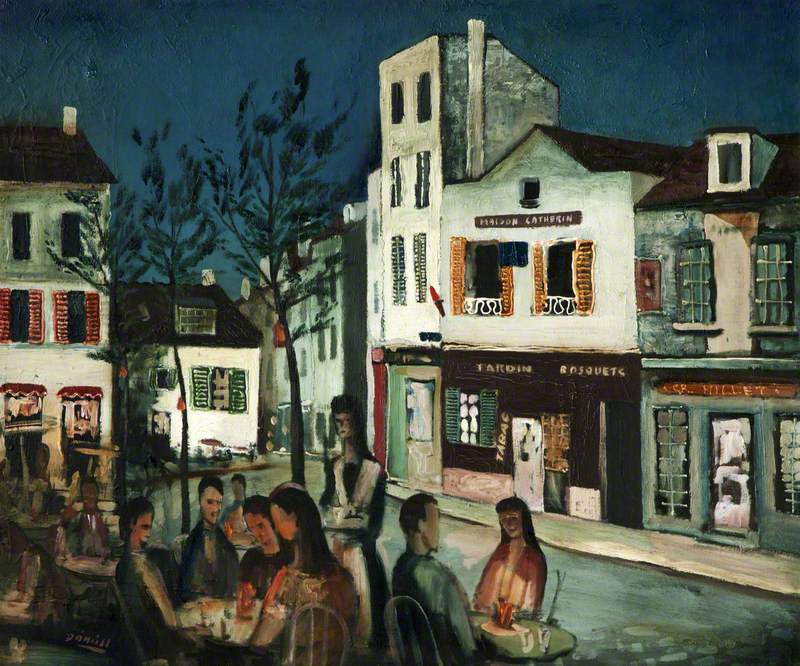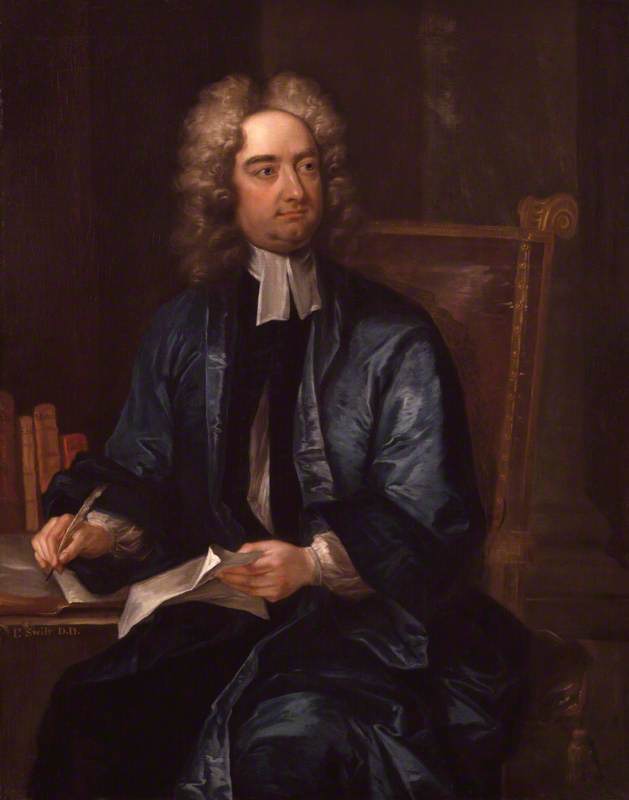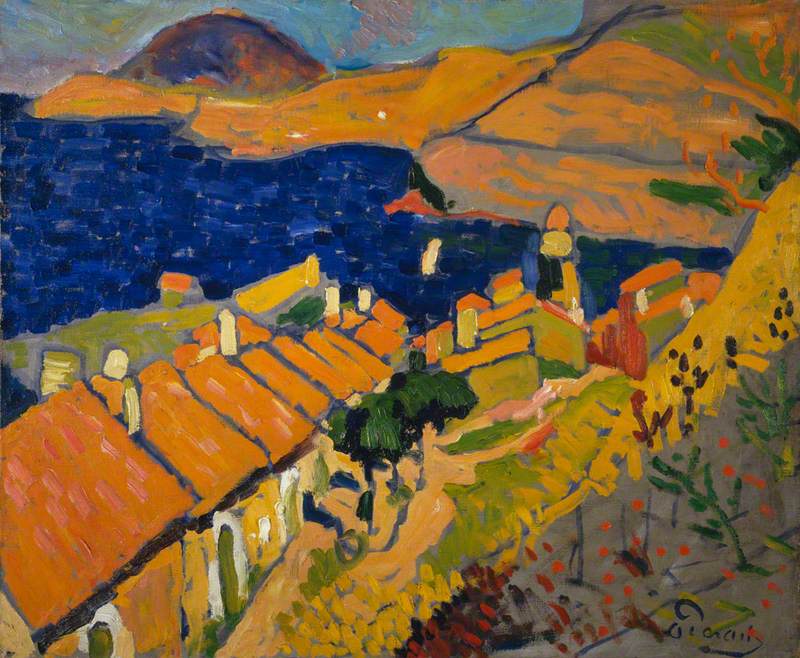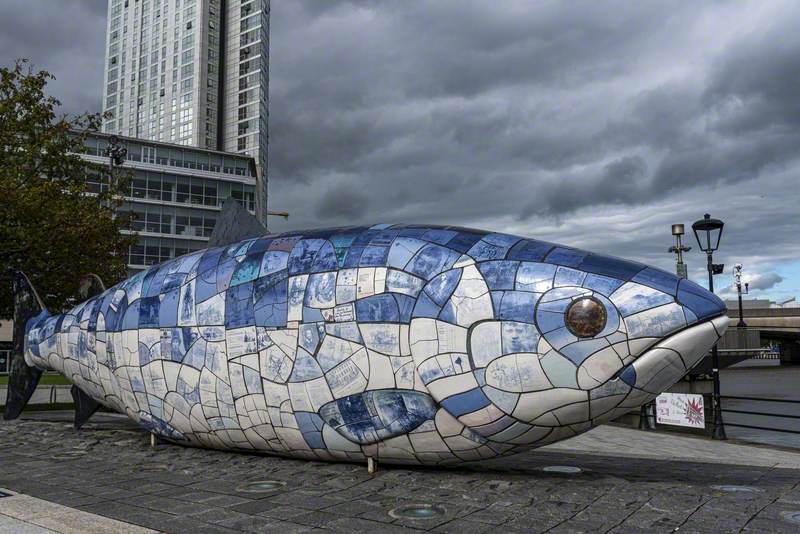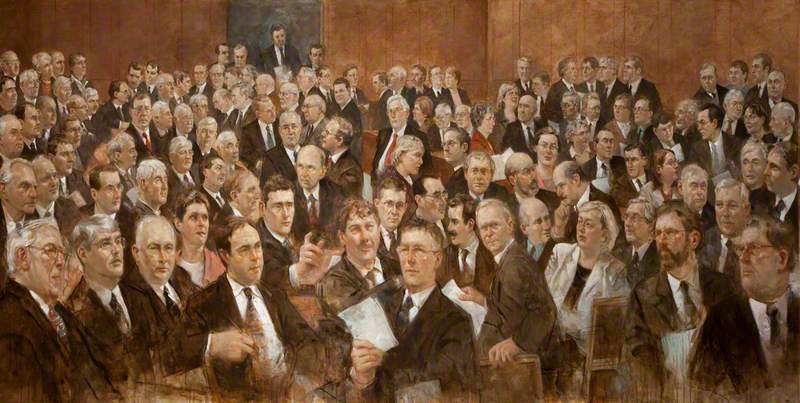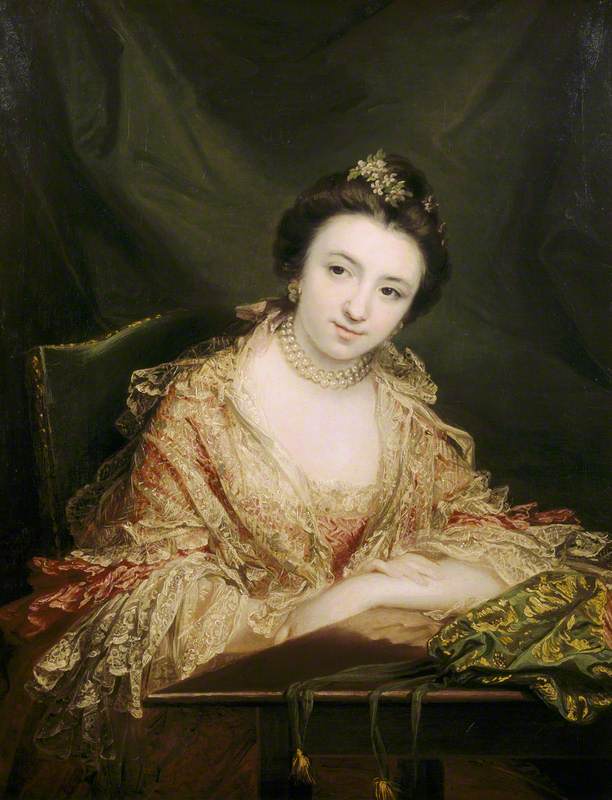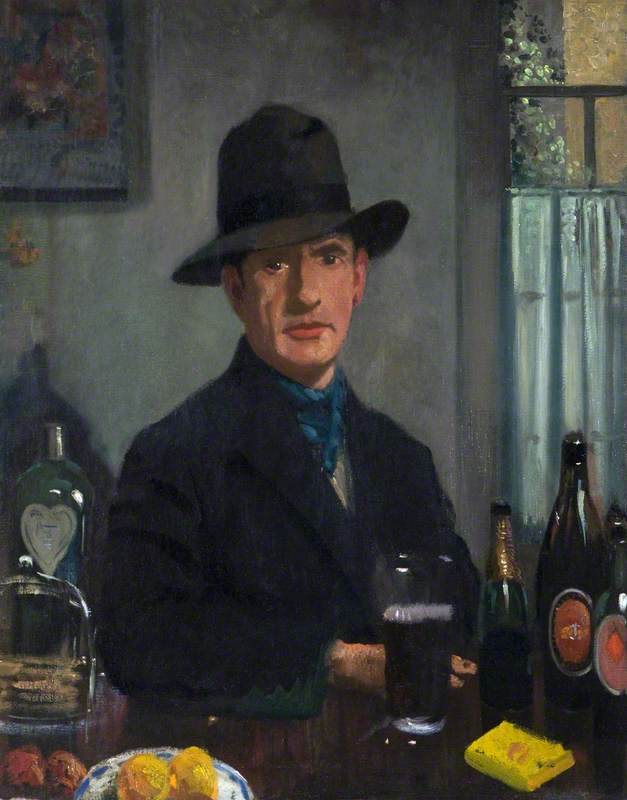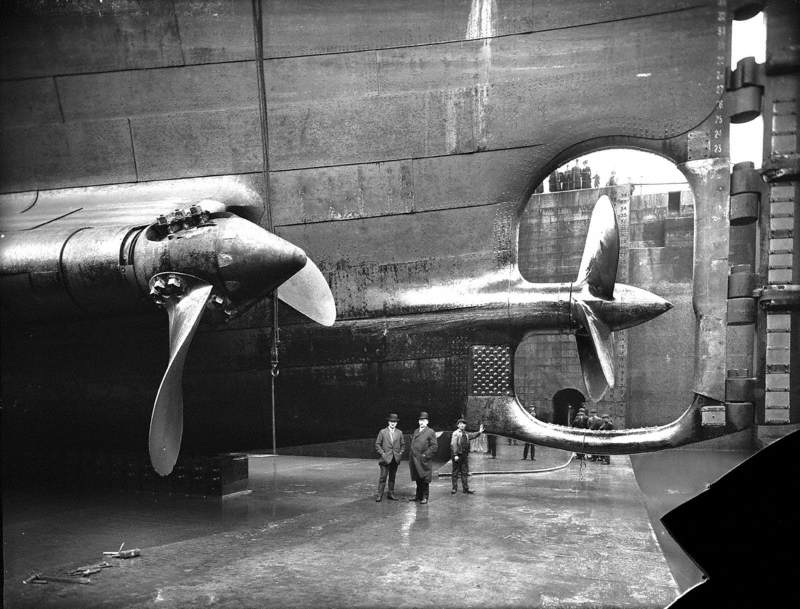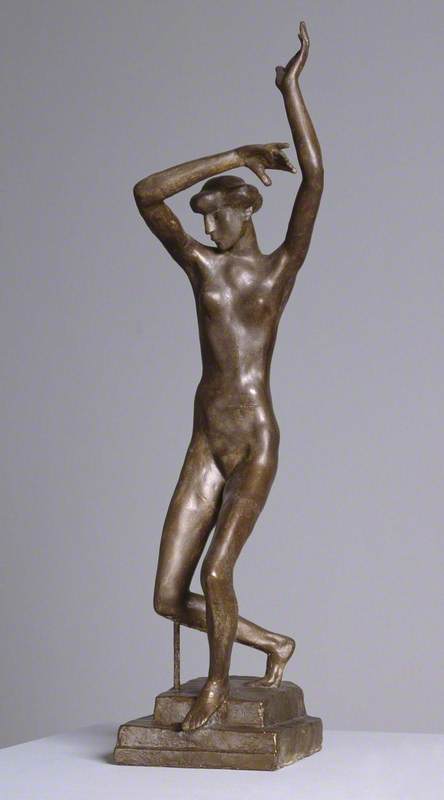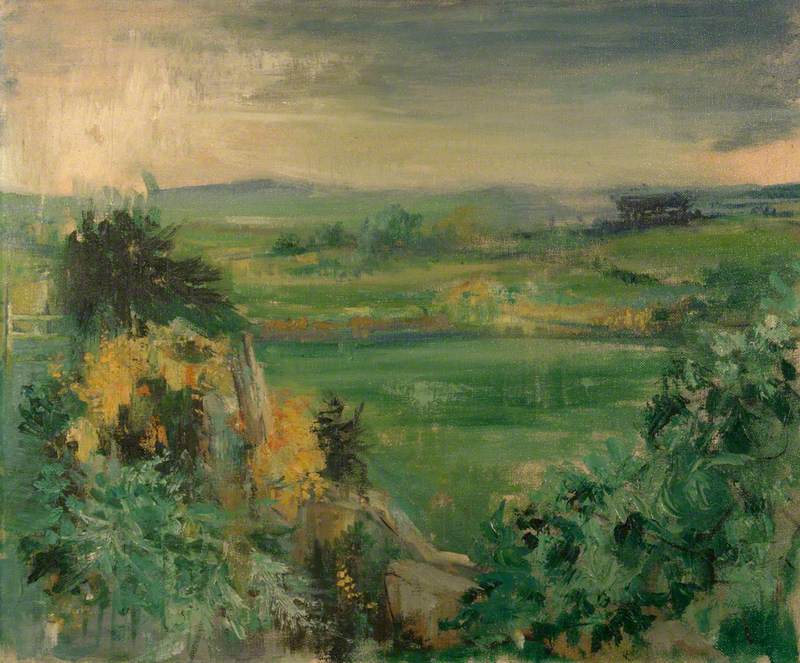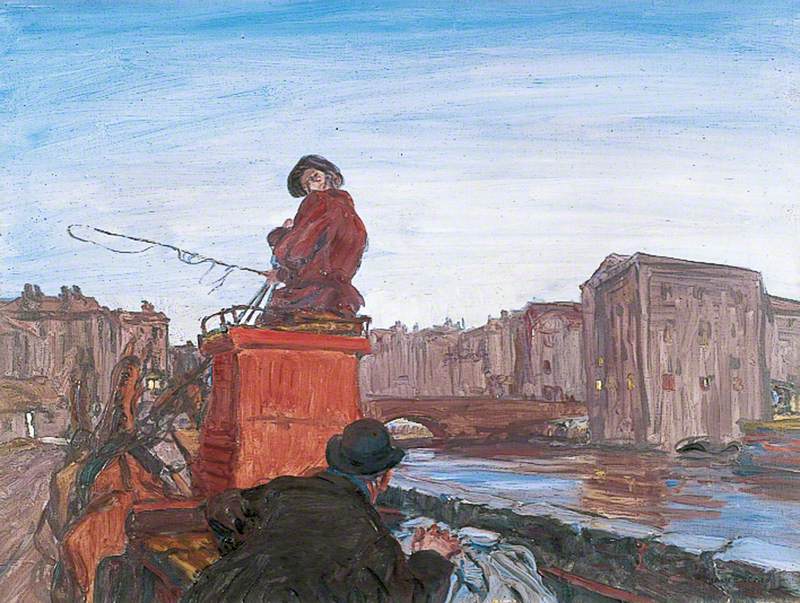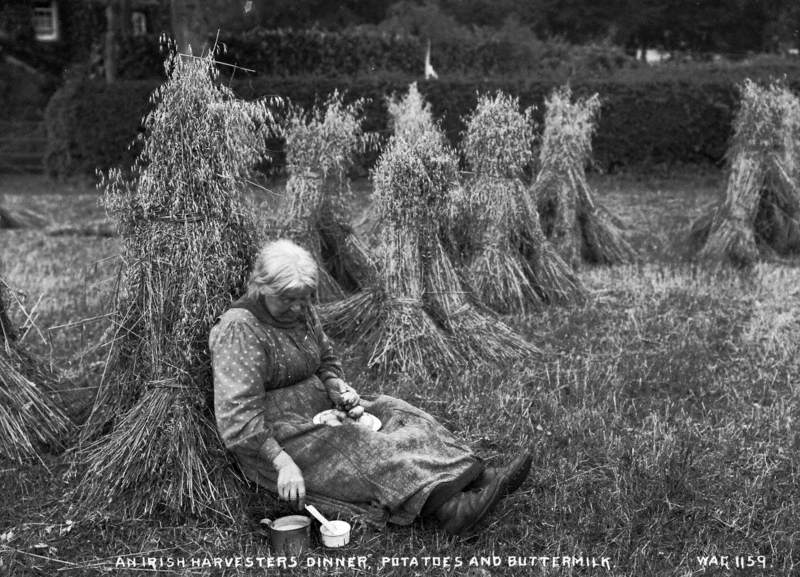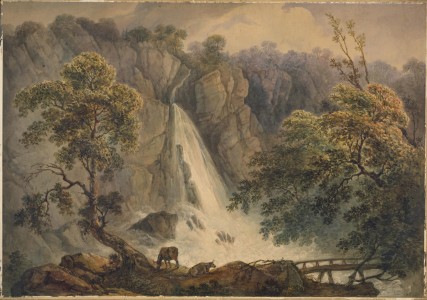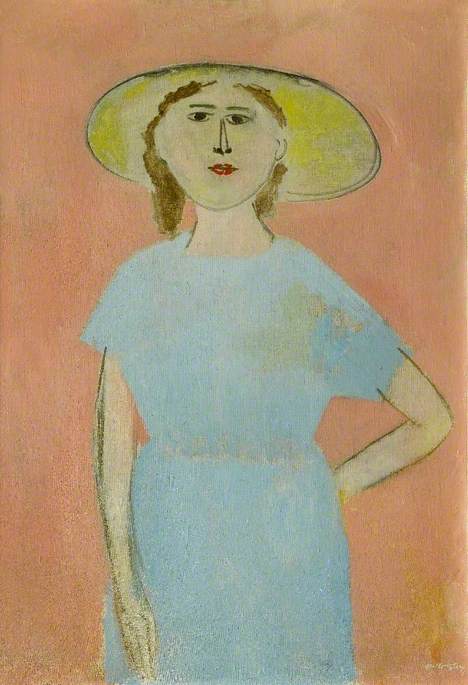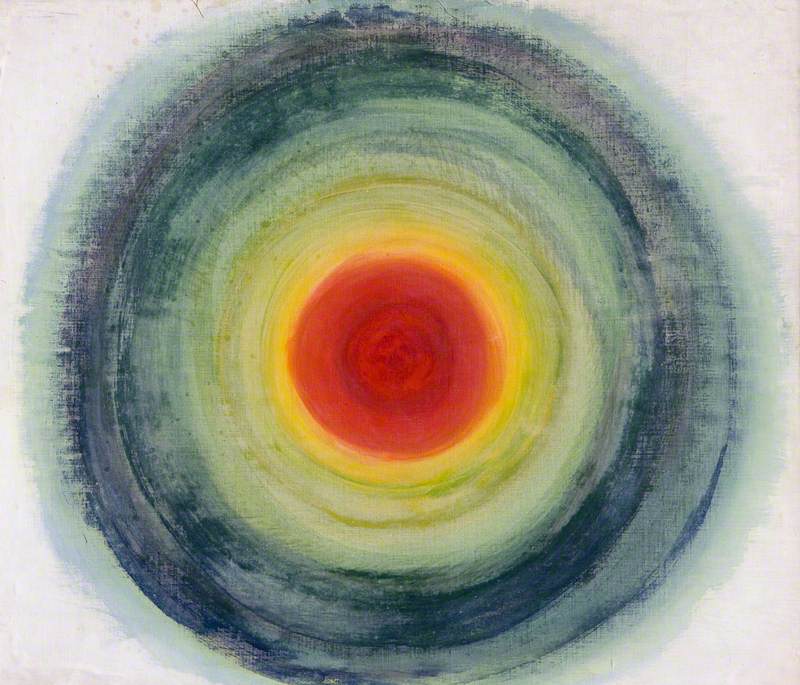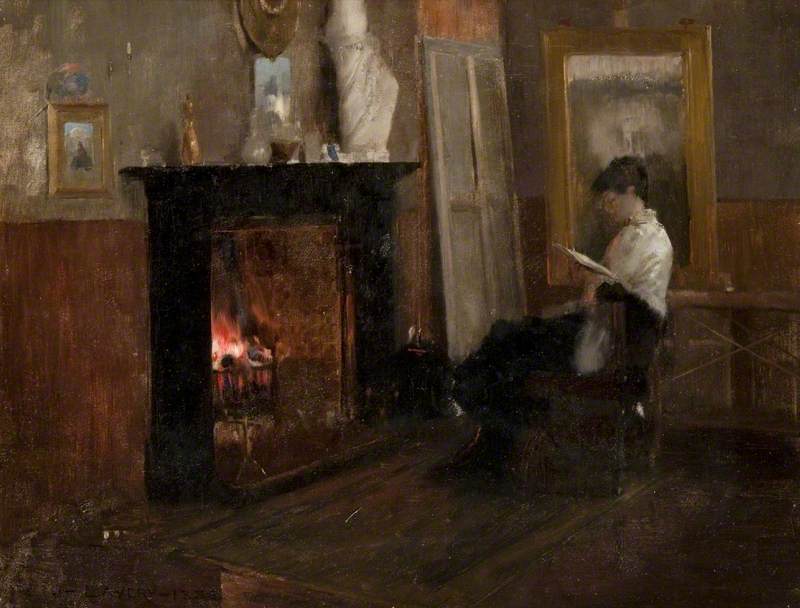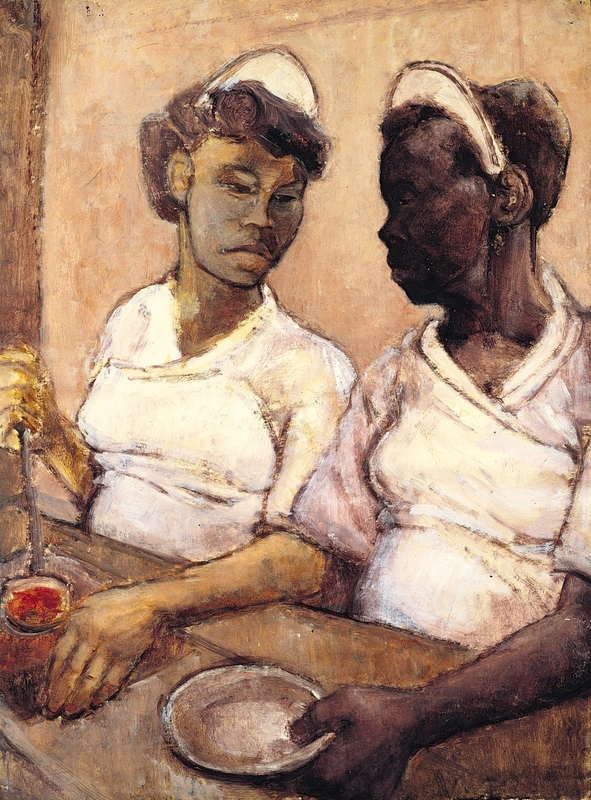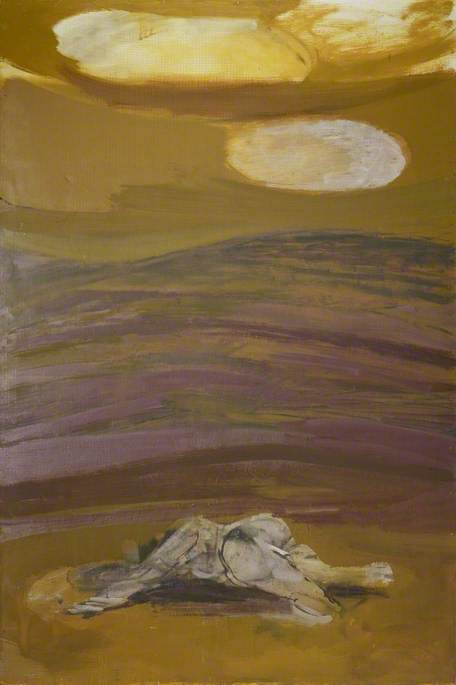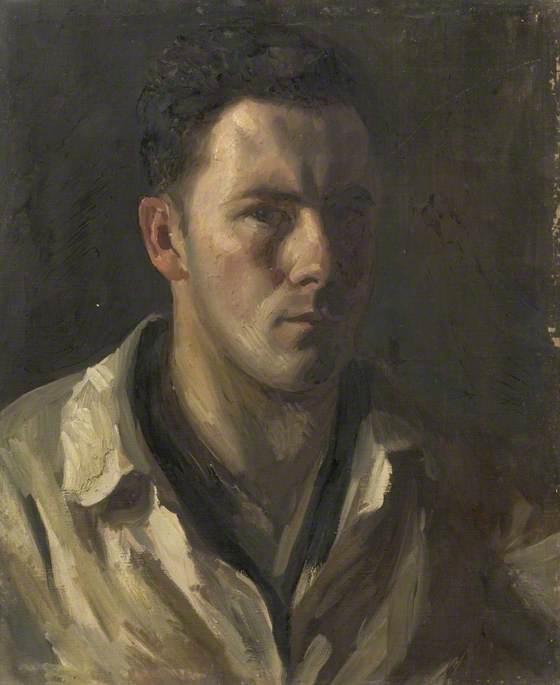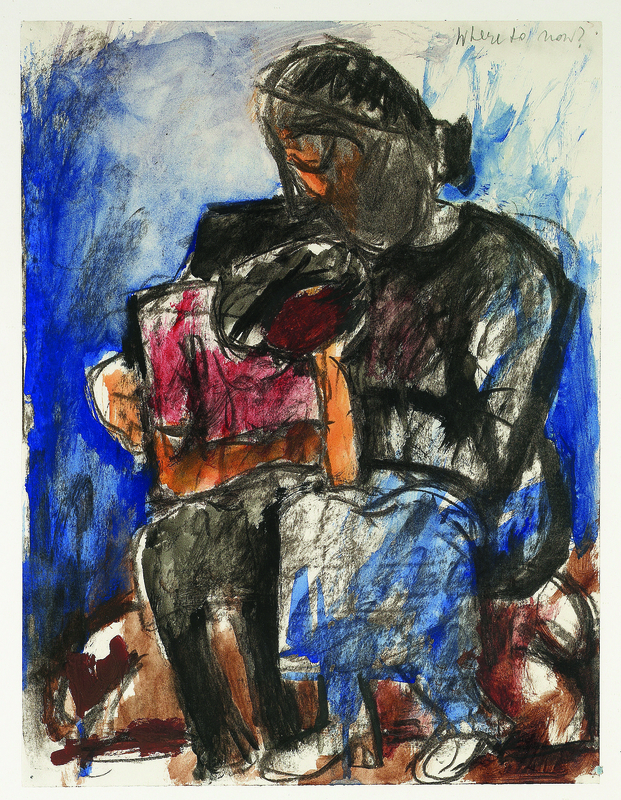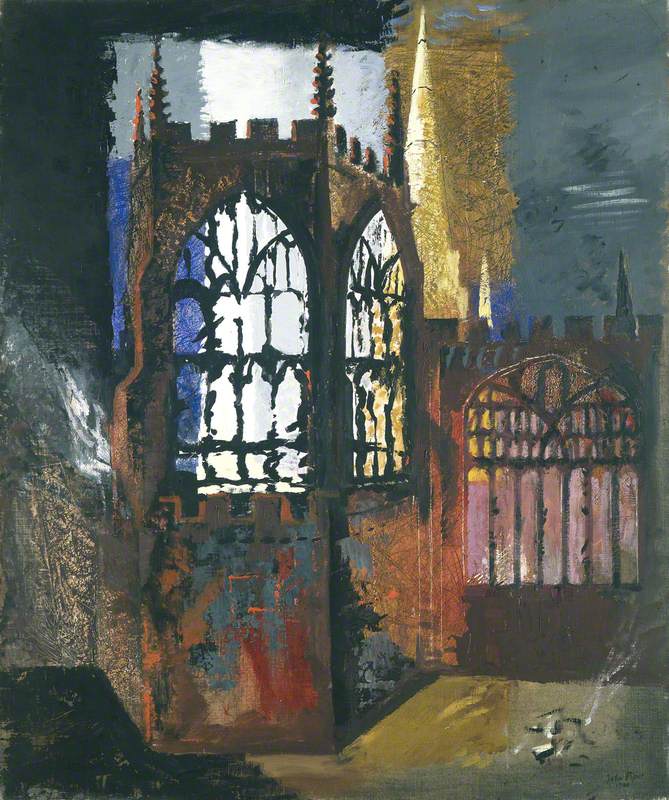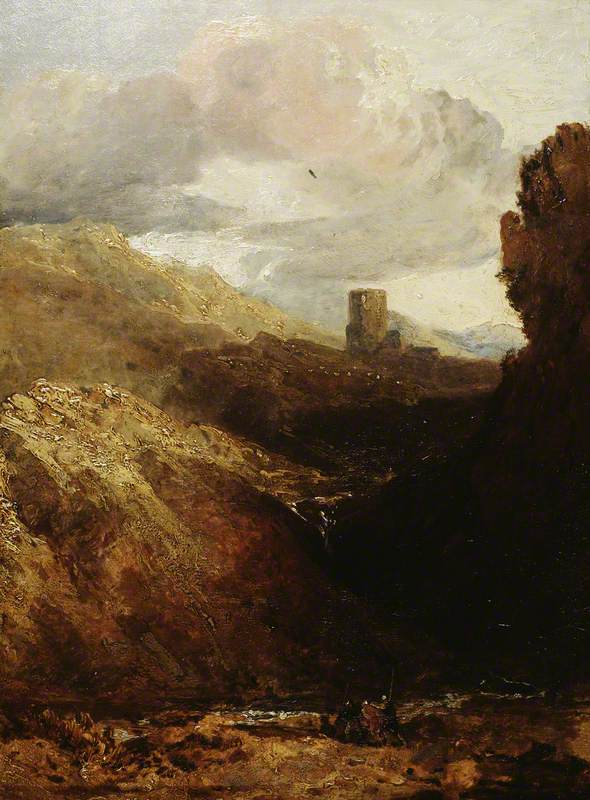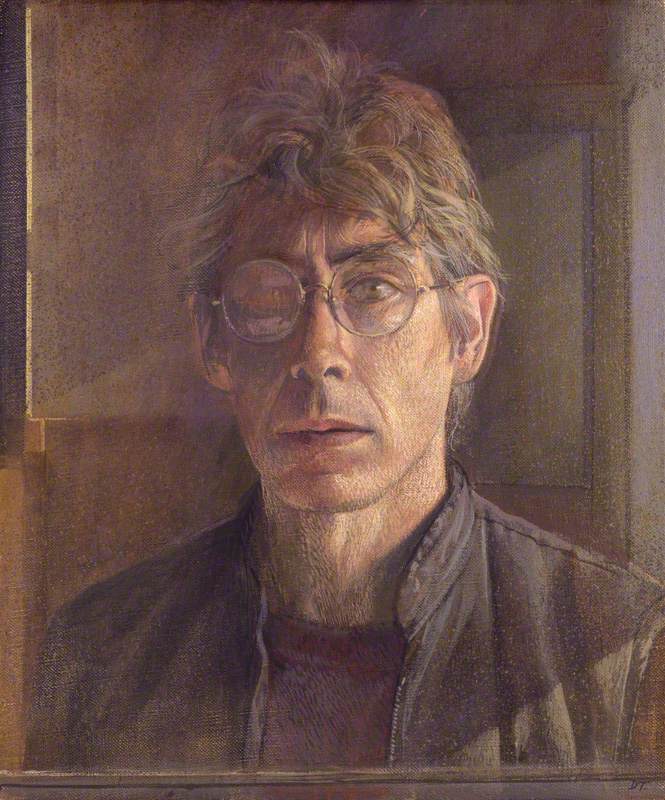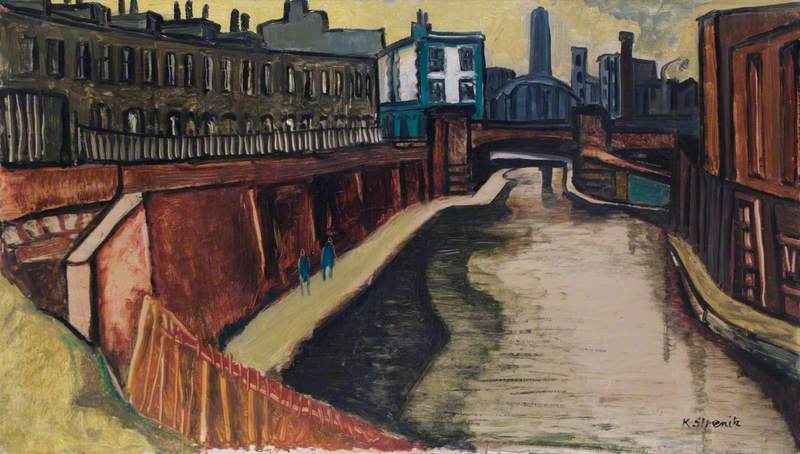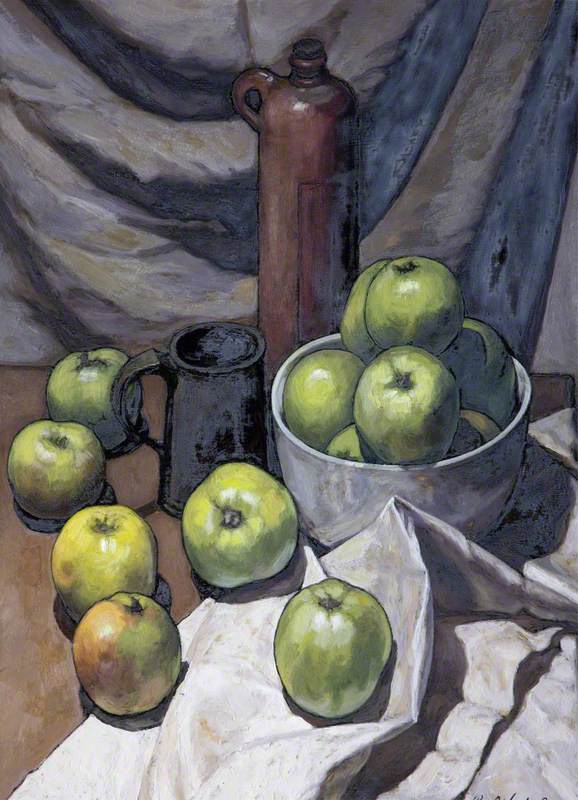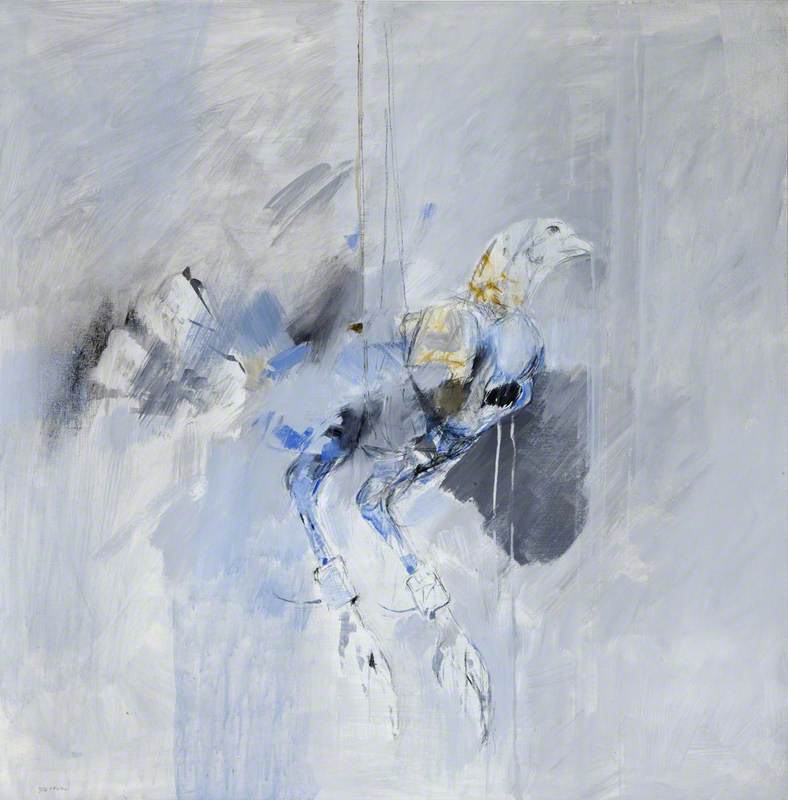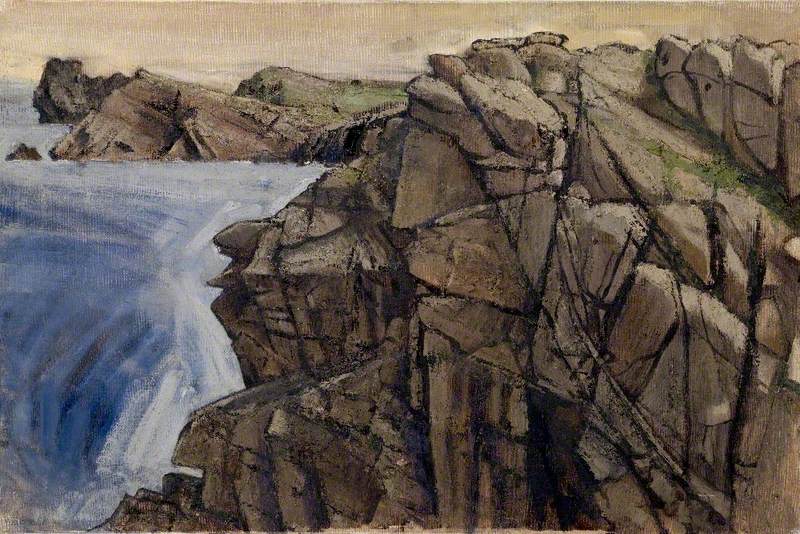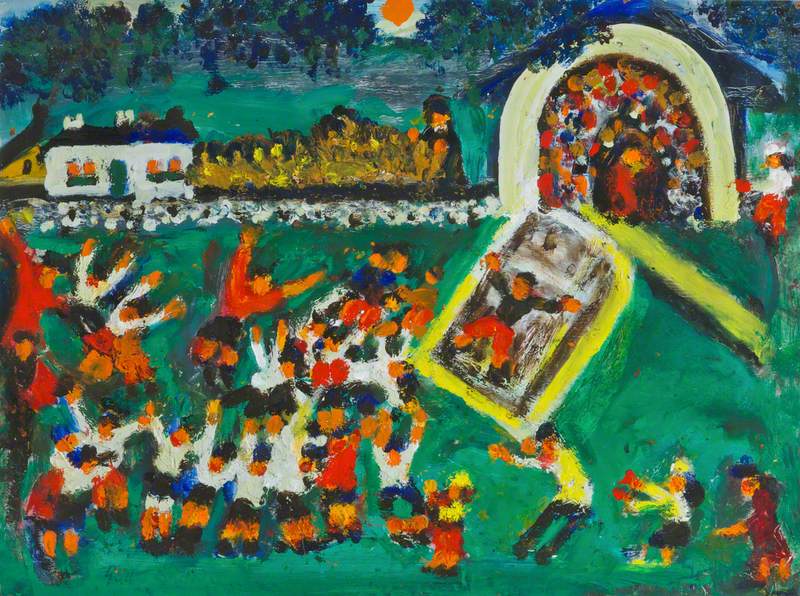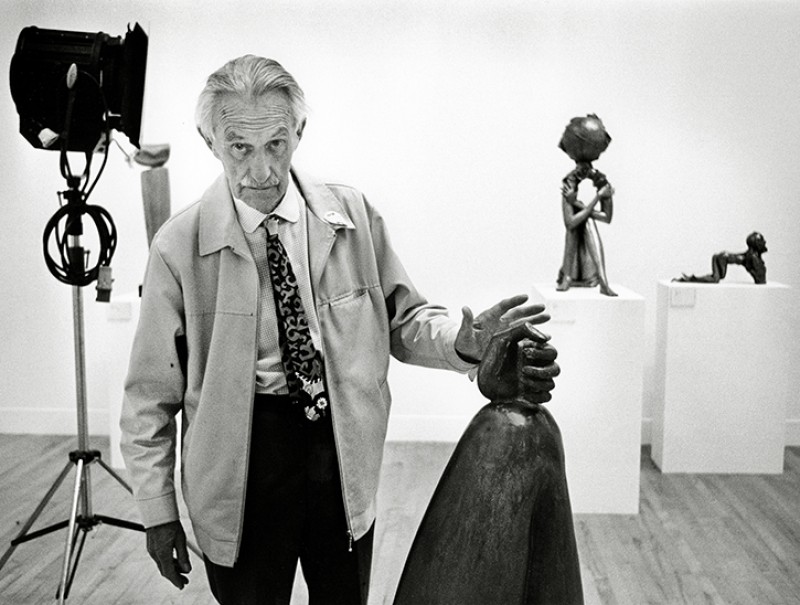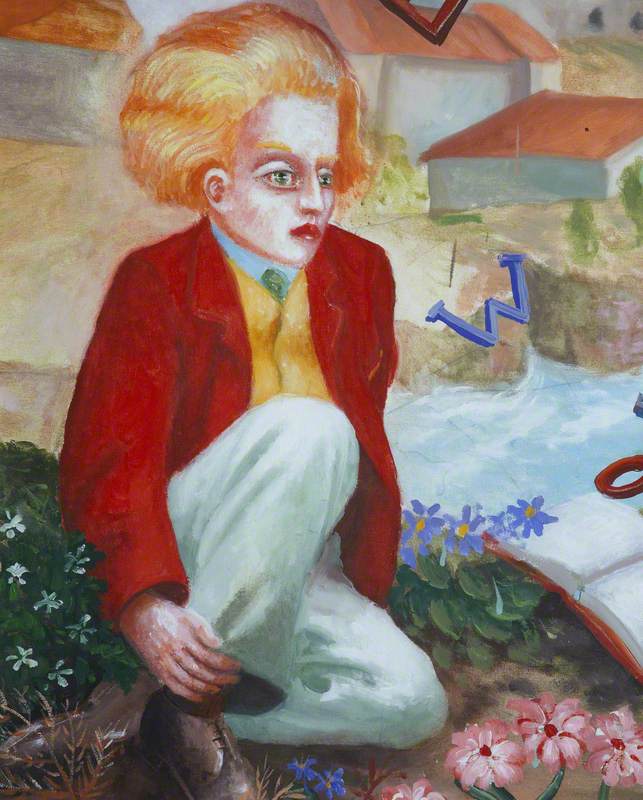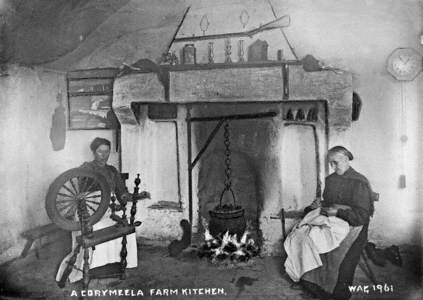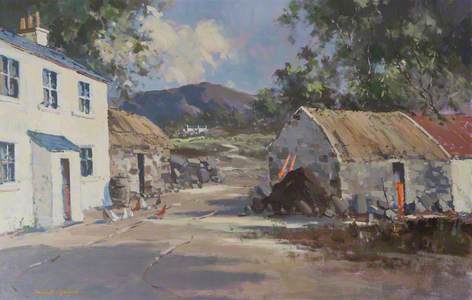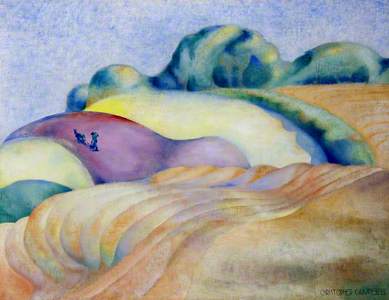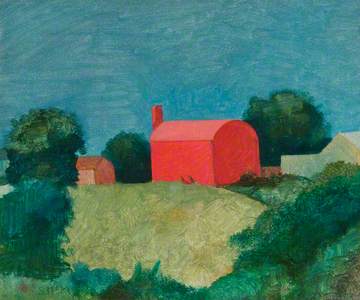Anyone familiar with Northern Ireland will know that farming is everywhere. It is one of our largest industries and a remarkable 75 per cent of land here is used for agriculture. One can stand in the middle of any town or city in Northern Ireland and look up to green fields, whether being ploughed, sowed or grazed by livestock. Tractors drive through the main streets of market towns, and even occasionally are seen in cities. Much of the population is only one or two generations removed from the land, and everyone knows someone who farms.
As farming takes up such space in the Ulster psyche it is no surprise that artists have responded in turn. Whilst the writers of Ireland have made their bread and butter from descriptions of an imperfect rural idyll, many painters have sought to capture the ephemeral relationship between a romantic concept of 'the land' and the practical hardness of farming life.
The activity of digging potatoes elevates the humble farming woman in this painting to a totem of Mother Earth herself, wrapped in bright red and dominating the image. Set against a vast, cloudy sky and a clean, almost flat horizon, the black folds of earth lead vertically to the viewer. The composition of the painting connects the potato digger with the earth and sky rather than the farmhouse that occupies such a reduced position.
The female subject might be unusual in the industrialised farming of today, but this painting points to the cottage industry of subsistence potato planting, growing enough for the hearth and home. With the Potato Famine fresh in the mind of the early twentieth-century viewers who would have first seen this painting, this red figure gives an heroic ambition to the subject. This painterly depiction is, however, no exaggeration of peasant farming in Ulster.
The photographs of William Alfred Green depicted a life very similar to that of The Potato Digger: a representation of a vanishing world which has perhaps become a typified image of pre-industrial rural life in Ireland.
Depictions of quiet, silent farm buildings also give a sense of the peace which many found in the hard daily graft of farming. Their silence denotes not just a lack of traffic and general hubbub but also the silence of farmhouses when workers were out in the field.
Ulster Farm, South Armagh by Cecil Maguire might offer a contrasting vision. It is also silent, apart from the imagined bleating of sheep in the painting's foreground. Yet the title provides a definite context; this is South Armagh in 1989, a dangerous and violent place during one of the worst periods of the Troubles. The image of an idyllic farm sits uneasily alongside the fact that the countryside was often as affected by the dark, insidious nature of sectarian violence as the towns and cities.
The paradox of Northern Ireland is, of course, that despite a history of violence, this is a country with community at its beating heart. The same can be said of the agricultural world. Farms in Ulster are often small compared to many of those in the UK and Ireland. Historically farms were owned by those who worked them, rather than tenanted; the land would be split between sons, then split again and again until parcels of land became manageable for a small farmer except at the busiest times of the year, when Ulster farmers rely on the help of children and neighbours.
Those relationships with the wider farming community are particularly important on the Northern Irish farm, as farming in Ireland is run on Conacre. Conacre is a system of letting agricultural land that is unique to Ireland. The current use of conacre originated with the Land Acts of the mid-nineteenth century. Today the term is used to reflect the system where landowners who wish to retain their land but not farm it can licence the land to another farmer, usually for a period of eleven months. Therefore, the need for community and good relationships with other farmers is vital.
This community can be seen in the regular livestock markets, which act as arenas of social gathering as well as sales and which play a pivotal role in farming life.
Mounthill Fair, Larne for example shows a gentle conversation between two men as they contemplate the ewes for sale in front of them. While one man studies the sheep, the other looks elsewhere, suggesting that their chat encompasses more than simply business. Business, however, can never be escaped – as any successful farmer will attest to.
Here one gets the feeling that the bucolic has truly given way to pounds and pence. Men in the foreground barter over a calf while, behind them, others seem to be wrangling over a sale. Echoes of earlier peasant-shawled ladies weave in and out and the pigs at the centre of the painting look warped and monstrous. The unsettling scene is reminiscent of Breughel.
Despite the clamour of community, farming is, at its core, a lonely business.
Christopher Campbell shows a lone ploughman setting his furrow, dwarfed by large, luminous fields in the exaggerated slopes of rolling drumlin. The field almost engulfs him and the artist points to the blurred lines of a farmer's relationship to the land, where at times the two almost become united, and one can even see the suggestion in some works of the farmer being swallowed up by the land.
In Apple Pickers, forms flow into each other so that it is difficult to describe where the trees, the pickers and the fields diverge. They are linked in a symbiotic dance of ochres and rust reds, mirroring autumnal tones against a clouded grey sky. The land here is as important as the activity. Johnson inherited a smallholding in the 1960s at a time when he had abandoned painting, and the strong connection he made with the land at this time inspired him to return to making art and also provided an enduring source of material.
The highly stylised work of John Luke creates a dreamlike interpretation of the Ulster countryside, the rolling hills, trees and hedgerows rising and falling, the clouds billowing overhead – all threatening to enfold the small white farmhouse like mixed cake batter. A fox, at first barely noticeable and shaped as organically as the landscape around him, slinks across the bottom of the painting. Fitting so perfectly into the landscape, there almost seems to be an assertion of his place within the natural order, a possession of the land as strong as that of the inhabitants of the small white farmhouse which stands out against the curving drumlins and the sky.
The same incongruity of human intrusion into the countryside can be seen in Ulster Barns.
The deep undulations of the drumlins are mirrored exactly in the shape of the barn which sits at the centre of the painting: a bright red that is commonplace in many parts of the country, yet still striking. The man-made, whether a landscape, a hedge row or a barn, is now so ingrained in the fabric of hills and valleys that ultimately the act of farming takes on the shape of the land itself. The painting echoes the red pillar of the female figure in The Potato Digger – farming becomes sacred, a bright, beautiful thing set apart amidst the toil and dirt.
Ruth Sanderson, journalist and broadcaster
This article was supported by Arts Council Northern Ireland
